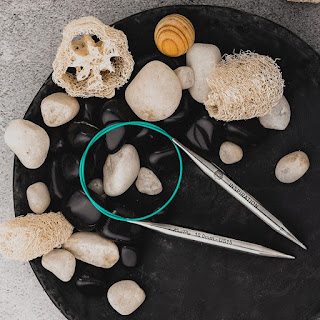Tunisian crochet is a subset of
crochet craft that shares much resemblance with knitting. Even the stitches
have a knit-like look though you use the specialized Tunisian
crochet hooks for the craft. They are also known as Interchangeable
Tunisian or Afghan crochet hooks. They are different than regular singled ended
crochet hooks because of they are used for crocheting. They are longer than
typical hooks as in Tunisian crochet, you work on a two-row pattern, the foundation
row where you pick up stitches on the crochet hook and work them off in the
next row. As you need to carry the stitches on your hook, you need to work with
an interchangeable cord to get the right length. This is even for crocheting in
the round, you will need a cord to work out the circumference. So, if you are
just starting, let us guide you through choosing the best Tunisian crochet
hooks for beginners.
Tunisian crochet hooks with
interchangeable circular cables
An interchangeable Tunisian crochet
hook consists of a hook that has a base which can be attached to a flexible cord
of different lengths. It is much like the tip of the interchangeable circular
knitting needle with the difference that instead of a pointy tip on the other
end you have a hook. Essentially, the cord holds the stitches. The
interchangeable crochet hooks allows to switch out different cord lengths with
the various size crochet hook heads. You can connect the right length
according to the need of the project.
Interchangeable
Tunisian crochet hooks can be bought individually or in a set. The different
hook sizes and varying cord lengths make it an ultimate choice as one set can
be used to work multiple projects and not just Tunisian but almost all kinds of
crochet. If you do not attach the cord, the hook is free for other crochet stitches.
Though the
interchangeable Tunisian crochet hooks are the most popular, the other options
are similar to single ended crochet hook but
are a lot longer than typical hooks. Similar to single pointed knitting
needles, there is one hook on end and a stopper on the other end. This prevent
loops from falling off the other end so they can hold many stitches and give
more room to work.
The other type of are double ended
crochet hooks much like the double pointed knitting needles (DPNs). With hooks on either end, it is most
frequently used when working Tunisian crochet in the round. The crochet hook
allows to grab stitches from both ends. It also used for colorwork in crochet
as both hooks can work on different colors of yarn at the same time.
So, now that you know about the
Tunisian crochet hooks, here’s what you need to know before choosing one.
- Choose the right hook size. As with
regular crochet, you’ll use a crochet hook size that corresponds with yarn
weight. You’ll find the hook size mentioned on the yarn label or the
pattern. Many crocheters recommend to use a hook that’s 1-2 sizes above
the standard given for a yarn for Tunisian crochet a sit tends to be
tighter than regular crochet.
- Consider
the hook length. If you are working on a scarf or a
dishcloth, make sure to have the right length so that the stitches can
easily stay on the hook and crud length.
- Gather your regular crochet supplies
for your craft. Make sure you have accessories such as stitch markers, a
tapestry needle, a row counter and a tape measure.
With the right crochet hooks and
accessories from Knitter’s Pride
you can begin with Tunisian crochet! Choose our Symfonzie Dreamz or Ginger
range if you are a fan of working with wood. Bamboo Tunisian crochet hook sets
are ideal for beginners as well as advanced makers.
Ready to begin? Happy crafting with
Tunisian Crochet Hooks!

.jpg)
